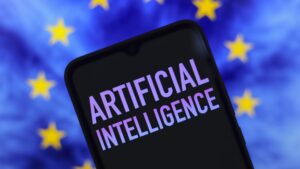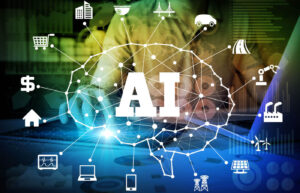The Critical Shortcoming in Current AI Technology

The Rapid Advancement of Artificial Intelligence
Artificial intelligence (AI) is advancing at an unprecedented rate. Recently, innovative reasoning models that rely on inferencing computing have emerged, significantly expanding AI capabilities. There’s a palpable excitement about the future of AI, particularly regarding the prospect of reaching Artificial General Intelligence (AGI), a term predicting machines that can understand and reason about the world like humans.
Indicators of Approaching AGI
Prominent figures in the AI industry are optimistic about where the technology is headed. For example, Sam Altman, the CEO of OpenAI, expressed confidence that we stand on the brink of monumental economic growth, visualizing a future where diseases can be cured and human creativity can be fully unlocked. Dario Amodei, the CEO of Anthropic, echoed these sentiments, projecting that human-level AI capable of outperforming humans in all tasks could be achieved within the next 2-3 years.
The Learning Limitation of AI
Despite these advancements, current AI systems still grapple with a significant shortcoming: they lack the ability to continuously learn. The current AI development process typically involves two main stages: training and inference. In the training phase, an AI learns from a vast amount of data. Then, during the inference phase, the AI uses this training to generate outputs and perform specific tasks.
The Problem of Static Learning
Once training is completed, an AI model’s parameters become fixed. Although the AI might be exposed to new data after deployment, it cannot learn from this information. Retraining the model from scratch is often a lengthy and costly process. This limitation presents a significant difference between AI and human intelligence. Unlike AI, humans learn and adapt continuously, seamlessly integrating new information over time.
The Promise of Continuous Learning
The concept of continuous learning, also referred to as lifelong, incremental, or online learning, aims to enable AI systems to learn dynamically, similar to human cognition. Another term gaining traction is "test-time training," suggesting a shift toward AI models that can adapt even during real-time tasks.
Current Workarounds in AI Learning
While AI experts have proposed several temporary solutions to address this continuous learning gap, none offer a complete fix. Here are a few notable methods:
Model Fine-tuning: After initial training, a model can be fine-tuned using a smaller dataset, allowing for slight updates to its knowledge. However, this method is still batch-based and requires significant resources, limiting its practicality for frequent use.
Retrieval and External Memory: Some systems leverage retrieval-augmented generation alongside external memory databases to pull in new information. Though this technique allows for some level of adaptation, it can become unwieldy as the volume of knowledge grows.
- In-context Learning: AI systems can adapt their behavior based on the context provided in prompts. Although effective for quick adjustments, in-context learning is transient and does not retain knowledge across different interactions.
The Need for Continuous Learning
Addressing the lack of continuous learning is critical for enhancing AI capabilities. If AI can evolve and accumulate knowledge over time, it could revolutionize personalizations, enabling more tailored user experiences.
Catastrophic Forgetting Challenge
A primary barrier to continuous learning is catastrophic forgetting, where an AI model might forget previously acquired knowledge when learning new information. Unlike humans, who can retain multiple skills simultaneously, AI struggles with this balance of stability and adaptability.
Approaches to Overcoming Forgetting
To tackle this issue, researchers have explored three main strategies:
Replay Methods: These methods involve retaining older data samples to intersperse with new data, reminding the model of past learning while it adapts. However, this approach does not scale efficiently.
Regularization Methods: These techniques impose constraints on certain model weights to protect existing knowledge during updates. While this can help, substantial shifts in data distribution can render these methods ineffective.
- Architectural Solutions: This approach involves modifying the AI model’s architecture to allocate different components for different knowledge areas. Although this can mitigate catastrophic forgetting, it often leads to increased complexity as the model grows.
Recent Advances in Continuous Learning
Recently, developments in generative AI and advanced language models have revitalized the quest for effective continuous learning methods. Company initiatives like Writer’s self-evolving AI and Sakana’s transformer-based solutions show promise. Writer’s models integrate real-time learning capabilities that allow it to self-reflect and adapt without full retraining, while Sakana’s approach enables the adjustment of weights based on the task at hand.
These innovations indicate a shift toward more personalized AI experiences, potentially enhancing user engagement and satisfaction. As the conversation surrounding continuous learning evolves, it is clear that the future of AI holds exciting possibilities for those looking to harness its full potential.





